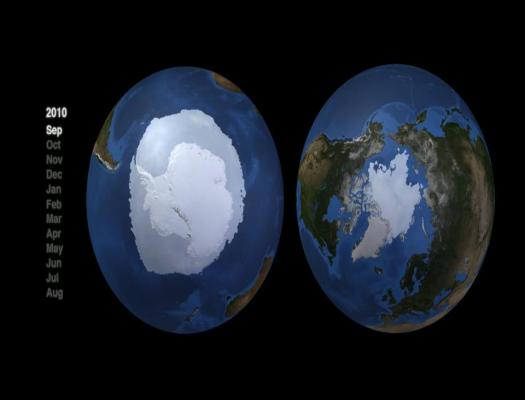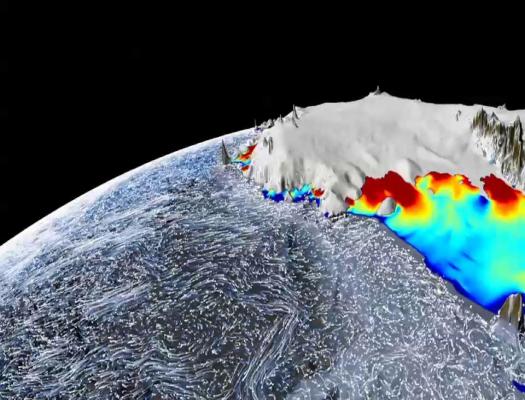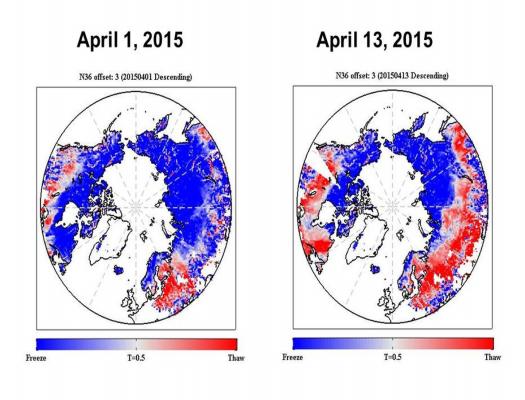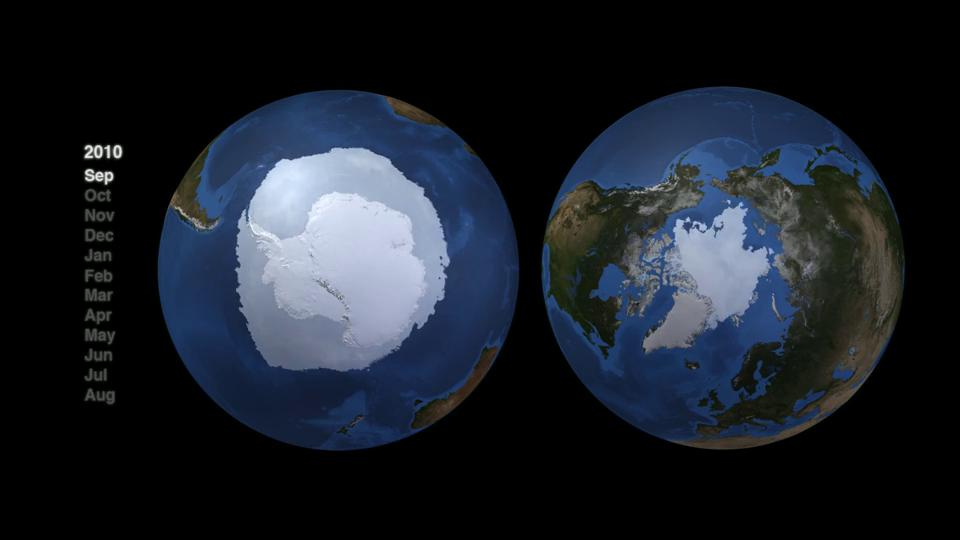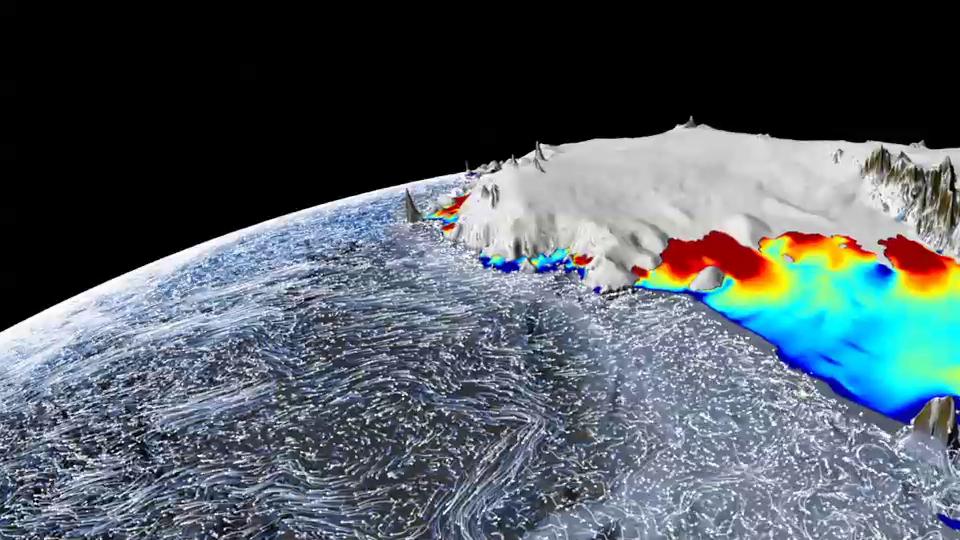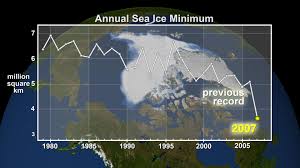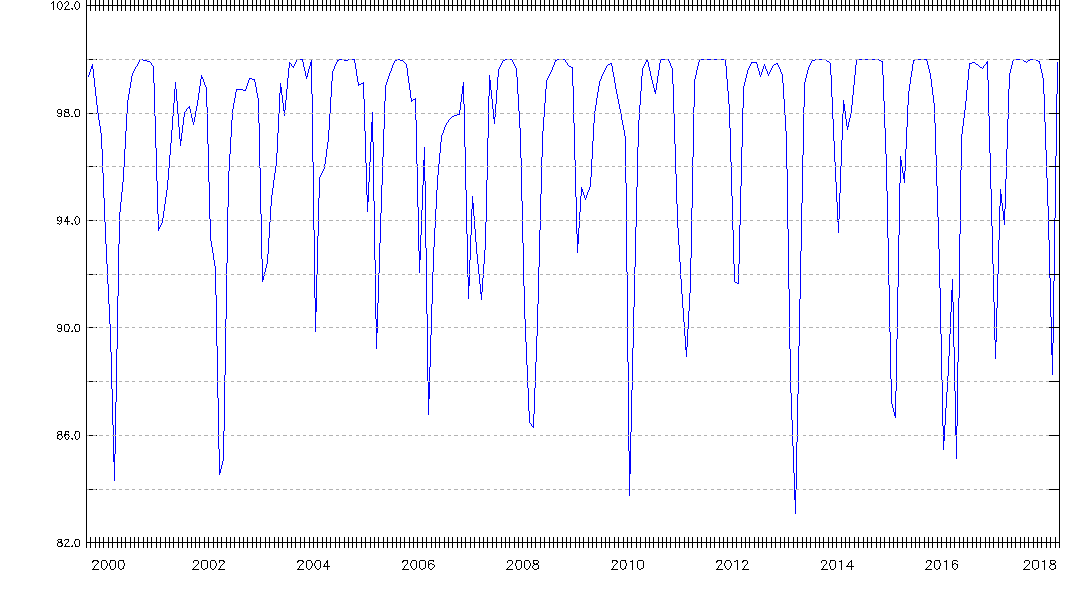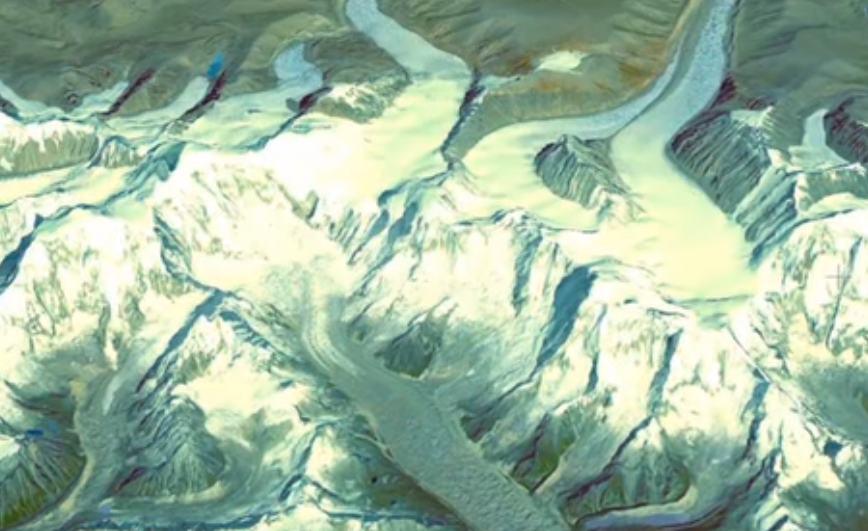Students explore the spatial patterns observed in meteorological data and learn how this information is used to predict weather and understand climate behavior.
loading Cryosphere...
Featured Mini Lessons
This mini lesson helps students visualize how the Hydrosphere and Cryosphere interact to produce changes in land and sea ice.
The advance-and-retreat cycle of snow cover drastically changes the whiteness and brightness of Earth. Using two maps created using NASA satellite data for 2017, students review the seasonal differences of snow and ice extent and answer questions on their observations.
Arctic sea ice is the cap of frozen seawater blanketing most of the Arctic Ocean and neighboring seas in wintertime. It follows seasonal patterns of thickening and melting. Students view how the quantity has changed from 1979 through 2018.
Students examine the two time series images to determine the differences between seasonal ice melt over water versus land.
Students will watch a video on the Greenland Ice Sheet and answer questions.
Students watch the video Frozen Earth and answer the following questions that discuss how ice helps moderate the planet's temperature using NASA satellites.
Students analyze two North Pole orthographic data visualizations produced from soil moisture data.


